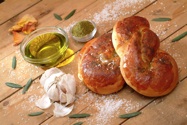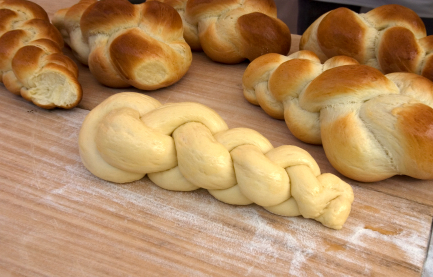Yeast Questions and Information
What is the difference is between fresh and dry yeast?
Do certain recipes require one particular kind or are they used indiscriminately?
What is the exact conversion from dry yeast to live yeast and vice versa?
There is a scientific difference between fresh and dry yeast. However, I do not have all the information on that. For me, it matters very little since the differences I have interest in is how they work, what the amounts are when you want to substitute one for the other, and why one would prefer one over the other.
There are definite differences when you use fresh or dry yeast. For one thing, many people do not know how to effectively store and use dry yeast so when you want to ensure that your yeast is really, really fresh, they will be told to buy only fresh yeast! Both yeasts have active cultures in them, but you use them slightly differently.
Fresh yeast is something I personally prefer for challahs simply because it works so well and when it’s very fresh, it tastes very nice. A typical challah recipe of 5 lbs. / 2.4 – 2.5 kilos of flour will call for 2.5 – 3 ounces of fresh yeast, depending on who is giving you the recipe. Two ounces of fresh yeast is the basic equivalent of 50 grams (plus a tiny bit more if you want to be very exact), of a fresh yeast cube OR 2 flat tablespoons of dry yeast. Every tablespoon of dry yeast is like 1 ounce of fresh yeast. If you look it up on charts, a scientific chart can give you exact grams and milligrams, but for the purposes of this article, these are the measurements I have been using for years and it always works.
Fresh yeast needs to be activated before being used by placing it in a small pareve bowl with very hot but not boiling water and a bit of sugar. You cover the bowl loosely and wait about 10 minutes. It should foam and bubble. Then you add this mixture to your challah dough in-the-making, and knead it all together.
Dry yeast can be just added into the dough mixture as you are preparing it without bubbling it up.
However, many, many people misuse dry yeast. Although the larger vacuum packs will tell you that you can store it after opening in a closet or in the fridge, if you do so it will not be as fresh or as active after just a few days. If you really want your dry yeast to work just as well as the day you opened it, it is crucial that you pour it out into a good plastic container with a strong lid and store it in the freezer for long term use. This way, every time you need it, you simply remove it from the freezer, twist it open, (I use large peanut butter plastic jars that I have saved and washed out, they work great for something like this!) and measure out the amount of tablespoons that you need for your dough. Presto – it will work great every time.
I don’t know all the reasons that some people prefer one type of yeast over others for different recipes. I just know for myself that I use fresh or dry yeast for challahs all the time, both work great. For ruggelach and yeast doughs I do prefer fresh yeast only and this is probably mostly because my mother and grandmother both did it this way. For flat breads, whole wheat loaves, and many other types of breads I often use dry yeast and it works very well.




